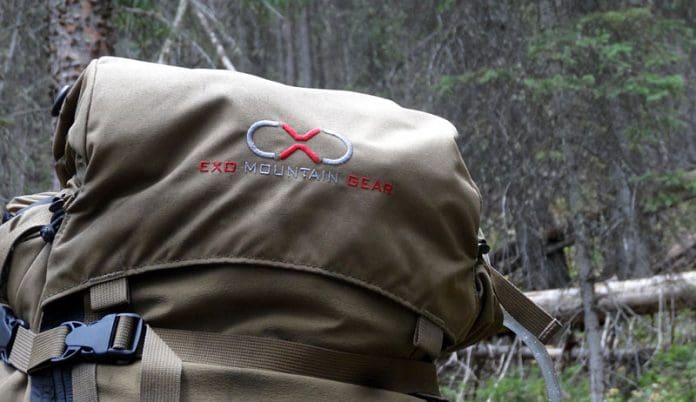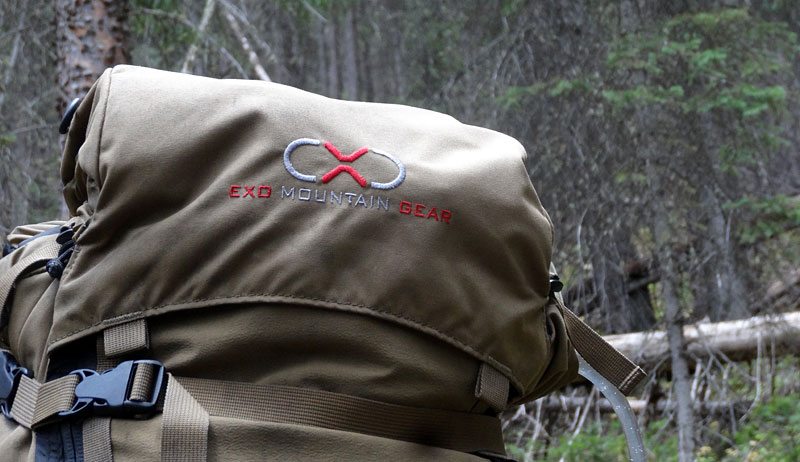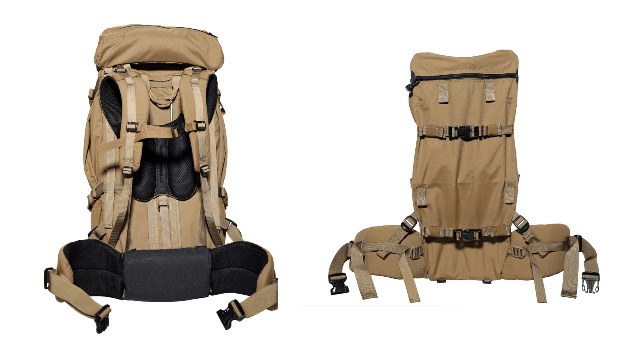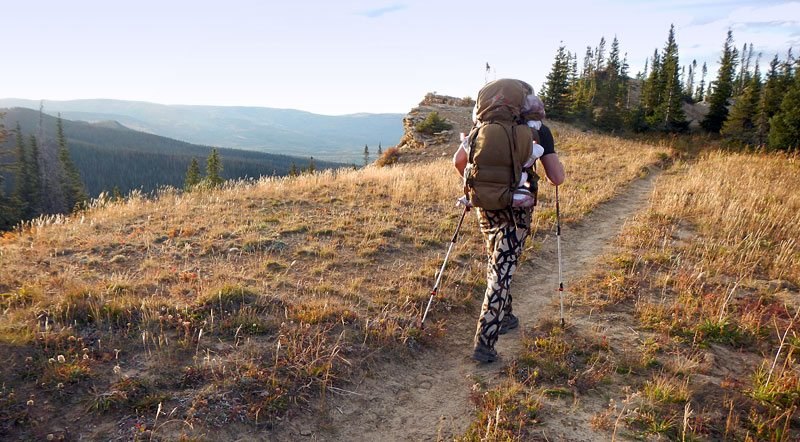Exo Mountain Gear 3500
by Mark Huelsing, Guest Contributor
Exo Mountain Gear hit the market with their first pack designs in early 2014. The company might be the new kid on the block, but their designs clearly display a hard-tested maturity that’s beyond the company’s short life.
Exo Mountain Gear offers a single frame and harness design, with three sizes of waistbelts. On that frame, you can choose to put Exo’s 3500 or 5500 pack. The pack bags are nearly identical in features and layout – the main difference being the larger volume of the 5500, which add little more than few ounces of weight.
I chose the 3500 for a week-long archery elk hunt in Colorado. It was just the right size to get my week’s worth of gear packed miles-deep into the backcountry and setup camp. I nearly maxed-out the 3500’s internal storage, but there were still plenty of options for strapping gear onto the outside of the pack, as well as in the load shelf between the bag and the frame. I like the 3500, but unless your gear list tends toward the minimalist side, you should consider the 5500 for endeavors lasting a week or more. (I should also note that the packs have more volume than their name implies, since the rating and naming convention don’t account for the pack’s full-length side pockets and other smaller storage areas.)
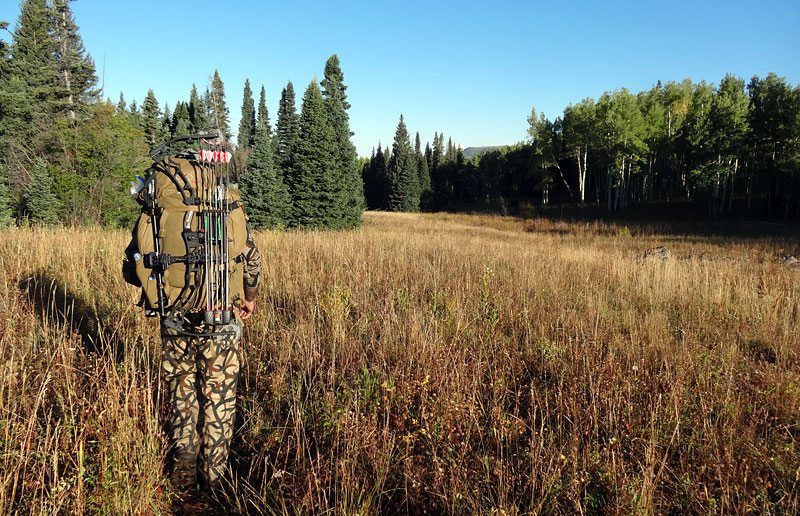
Before that trip this past September, I had plenty of time to play with the pack’s layout, test its functionality on weighted training hikes, and use it on some weekend backpacking trips. Going into that elk hunt, I was already a fan of the pack’s design, the quality of the materials, and the concept of the innovative “Skeleton” titanium frame. I appreciated the layout of the bag, lid, pockets, and side-sip access.
Those are all good things, but they’re not the hard-tested, real-world experience that forces the pack to either prove its strength or reveal its weaknesses. Good ideas and clever features don’t mean crap if the pack is miserable to carry, difficult to use, or outright fails when you need it most.
Thankfully, after living out of the Exo for a week, I also had a chance to carry more than half the meat of a deboned bull (a single trip with 130-150lbs) over six-miles of mountainous terrain – ascending to 11,300′, before diving, sliding, and nearly crawling down to the trailhead. When it mattered most, the Exo performed admirably.
I cannot objectively state that the Exo Mountain Gear pack is the greatest pack on the market for backcountry hunting. Nobody can make that claim, because preferences and needs vary from user to user. But I will say without hesitation that the Exo Mountain Gear 3500 (and its big brother, the 5500) is definitely the best pack on the market for my budget, my needs, and my preferences.
I won’t dive into every detail and specification of the pack – if you’re interested in that, head over to Exo Mountain Gear– but let me highlight some of the details and functions that I found most valuable.
Simplicity
The Exo provides what you need, and not what you don’t. In an age where everyone wants to claim “innovation” with “features” that are, in all actuality, little more than marketing fluff, the Exo focuses on stripping things down to what’s necessary.
Adjustability
The size-specific waist belts avoid the common pitfalls of the one-size-fits-all approach. The lumbar pad can be tailored to a user’s preference. The harness is easily adjusted for a wide variety of toro lengths. And, probably most importantly, all of the adjustments hold secure – even with heavy loads. In fact, I never once removed or readjusted my pack during that six-mile packout mentioned above.
Fluid rigidity
What the heck does that mean? Well, the unique frame design allows for fluid, uninterrupted movement while wearing the pack, yet the vertical rigidity of the frame doesn’t bow or buckle under heavy loads. It’s really something that needs to be experienced.
Size versatility
As I mentioned, I nearly maxed-out the 3500’s built-in storage capacity with a week’s worth of gear, but the pack also collapses down to nothing and makes a great daypack. And speaking of versatility, I have also used the Exo to haul high-volume loads, such as treestands and ladder sections, which it handles with ease.
Accessories
Exo Mountain Gear offers several accessory options that have as much design forethought as the pack and frame itself. For example, the hipbelt pocket features dual zippers that are easy to open one-handed, a wide-opening that makes it easy to retrieve and replace items, and a level of rigidity that allows the pocket to hold its shape even when opened. They also offer a load-shelf accessory, a “beaver tail” panel, and more. The accessories are all reasonably priced and built right here in the USA.
The owners and designers of Exo Mountain Gear, Steve Speck and Lenny Nelson, are backcountry hunters at heart, and that shows in the design, features, and built-quality of Exo packs. With Exo’s price point, quality of materials, domestic production, and functionality, it should definitely be a consideration for anyone that’s looking at a versatile hunting backpack that’s lightweight, yet tough enough to handle demanding loads.
Visit SoleAdventure.com for even more information
Discuss this article here













